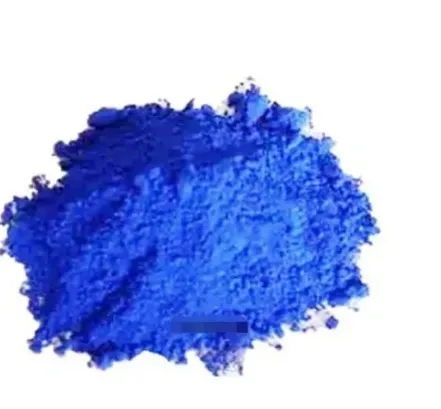Warning: Undefined array key "title" in /home/www/wwwroot/HTML/www.exportstart.com/wp-content/themes/1198/header.php on line 6
Warning: Undefined array key "file" in /home/www/wwwroot/HTML/www.exportstart.com/wp-content/themes/1198/header.php on line 7
Warning: Undefined array key "title" in /home/www/wwwroot/HTML/www.exportstart.com/wp-content/themes/1198/header.php on line 7
Warning: Undefined array key "title" in /home/www/wwwroot/HTML/www.exportstart.com/wp-content/themes/1198/header.php on line 7
- Afrikaans
- Albanian
- Amharic
- Arabic
- Armenian
- Azerbaijani
- Basque
- Belarusian
- Bengali
- Bosnian
- Bulgarian
- Catalan
- Cebuano
- China
- China (Taiwan)
- Corsican
- Croatian
- Czech
- Danish
- Dutch
- English
- Esperanto
- Estonian
- Finnish
- French
- Frisian
- Galician
- Georgian
- German
- Greek
- Gujarati
- Haitian Creole
- hausa
- hawaiian
- Hebrew
- Hindi
- Miao
- Hungarian
- Icelandic
- igbo
- Indonesian
- irish
- Italian
- Japanese
- Javanese
- Kannada
- kazakh
- Khmer
- Rwandese
- Korean
- Kurdish
- Kyrgyz
- Lao
- Latin
- Latvian
- Lithuanian
- Luxembourgish
- Macedonian
- Malgashi
- Malay
- Malayalam
- Maltese
- Maori
- Marathi
- Mongolian
- Myanmar
- Nepali
- Norwegian
- Norwegian
- Occitan
- Pashto
- Persian
- Polish
- Portuguese
- Punjabi
- Romanian
- Russian
- Samoan
- Scottish Gaelic
- Serbian
- Sesotho
- Shona
- Sindhi
- Sinhala
- Slovak
- Slovenian
- Somali
- Spanish
- Sundanese
- Swahili
- Swedish
- Tagalog
- Tajik
- Tamil
- Tatar
- Telugu
- Thai
- Turkish
- Turkmen
- Ukrainian
- Urdu
- Uighur
- Uzbek
- Vietnamese
- Welsh
- Bantu
- Yiddish
- Yoruba
- Zulu
11-р сар . 14, 2024 00:34 Back to list
raw propylene glycol
Understanding Raw Propylene Glycol Properties, Uses, and Safety
Raw propylene glycol, a colorless and odorless liquid, is a synthetic organic compound with the chemical formula C3H8O2. It is a type of glycol and is primarily produced through the hydration of propylene oxide. Renowned for its versatility, raw propylene glycol has become a crucial ingredient in various industries, encompassing food, pharmaceuticals, and industrial applications.
Physical Properties
At room temperature, raw propylene glycol has a low viscosity, which makes it easy to handle and integrate into different formulations. It has a high boiling point of approximately 188.2 °C (370.8 °F) and is hygroscopic, meaning it can attract moisture from the air. Its ability to retain water enhances its use in moisturizing products. Additionally, propylene glycol is miscible with water, acetone, and chloroform, expanding its applicability across diverse chemical mixtures.
Applications in Industry
The uses of raw propylene glycol are extensive
. In the food industry, it serves as a food additive designated as E1520, functioning as a humectant, solvent, and flavor carrier. Chefs and food manufacturers appreciate propylene glycol for its ability to retain moisture, thereby prolonging shelf life and enhancing flavor profiles in products like baked goods, sauces, and dressings.In the pharmaceutical sector, raw propylene glycol is used as a solvent for oral, injectable, and topical drugs. Its safety profile and efficacy in dissolving active ingredients make it an essential component in numerous medicinal formulations. Notably, it is also utilized as an excipient in cosmetic products, providing hydration and improving texture in creams and lotions.
raw propylene glycol

Beyond these applications, raw propylene glycol is used in the manufacturing of antifreeze and de-icing solutions, as it lowers the freezing point of water. Its role as a coolant and solvent in industrial processes further underscores its versatility.
Safety and Regulation
The safety profile of raw propylene glycol is a significant consideration in its widespread use. The U.S. Food and Drug Administration (FDA) and the European Food Safety Authority (EFSA) have both recognized propylene glycol as generally safe for consumption in specified quantities. Nevertheless, it is essential to adhere to safety guidelines, as excessive exposure or ingestion can lead to health issues.
Furthermore, significant advancements in technology and regulation ensure that raw propylene glycol is produced and utilized responsibly. Manufacturers must comply with safety standards and undergo rigorous testing to verify the purity and safety of propylene glycol before it reaches consumers.
Conclusion
In conclusion, raw propylene glycol is an indispensable compound that finds its relevance across a multitude of industries due to its unique properties and versatility. From food preservation to pharmaceutical applications, its importance cannot be overstated. As industries continue to innovate and expand, so too will the applications and regulations surrounding this essential glycol. Understanding its uses, benefits, and safety will remain crucial as we navigate a world increasingly reliant on sophisticated chemical compounds.
Latest news
-
Certifications for Vegetarian and Xanthan Gum Vegetarian
NewsJun.17,2025
-
Sustainability Trends Reshaping the SLES N70 Market
NewsJun.17,2025
-
Propylene Glycol Use in Vaccines: Balancing Function and Perception
NewsJun.17,2025
-
Petroleum Jelly in Skincare: Balancing Benefits and Backlash
NewsJun.17,2025
-
Energy Price Volatility and Ripple Effect on Caprolactam Markets
NewsJun.17,2025
-
Spectroscopic Techniques for Adipic Acid Molecular Weight
NewsJun.17,2025

